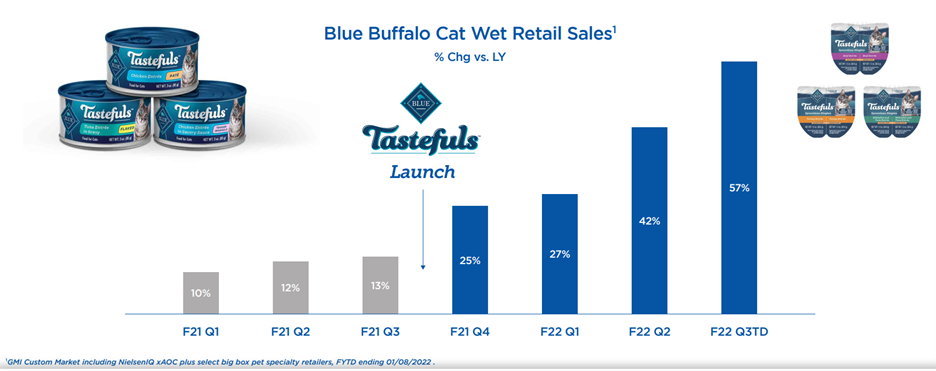Underneath the supply chain headlines, General Mills has built one of the more sophisticated analytical engines in American business. Last month the company behind Coco Puffs and Bisquik reported $660 million in third-quarter profit, an increase of 11% from the previous year. Compared to pre-pandemic levels, General Mills experienced a 6% growth in net sales. Perhaps the most impressive part of the achievement is that profit growth was accomplished while selling fewer products.
The obvious culprit is that General Mills is the beneficiary of broad-based price increases driven by inflation. Price increases are a contributing factor, but a close reading of management’s comments reveals a fully integrated pricing strategy enabled by industry-leading analytics is the larger culprit. Combined with the company’s overall pricing power, it’s now paying dividends. “The pandemic,” Dana McNabb, the company’s Chief Strategy and Growth Officer, told investors at the annual CAGNY conference in February, “has highlighted the strength of our strategic revenue management capabilities.”
Strategic Revenue Management, or revenue growth management, is a CPG industry term that refers to utilizing a variety of operational levers to increase overall firm profitability. These levers vary by company, but the four McNabb highlighted in her presentation serve as a reliable proxy for the general industry. This post will explain the four levers of strategic revenue management, and how General Mills applied them at Blue Buffalo.
Strategic Revenue Management – The Four Levers
In laypeople’s terms, General Mills is trying to increase the shelf price of each product by as much as it can without impacting a consumer’s demand for it. This involves careful coordination between the Finance, Sales, Supply Chain, and Innovation teams. The table below outlines the levers while explaining the interplay between the groups.
| Name | Description | Groups(s) |
|---|---|---|
| List Price | The price General Mills wants to sell the goods to retailers before any pricing discounts. Price increases you hear about are typically done through this lever. | Finance determines the targeted list price. Sales sell in the price increase to retailers and generate a forecast for the Supply Chain team. Supply Chain build forecasts to ensure product supply. |
| Promotion Optimization | Determining the right promotional price discounts to drive incremental sales. | Finance: Determines budget and volume targets. Sales: Designs sales plan to meet targets and provides a promotional forecast for the Supply Chain team. Supply Chain: Ensures product supply. |
| Pack Price Architecture | Determining the right product offering to enable the price increase. E.g., smaller pack sizes typically correlate with higher per-unit prices. However General Mills can’t simply offer all cereal in 1-ounce increments. General Mills excels at this, having seen price mixes increase each quarter. | Innovation Team: Collaborates to develop new offerings at different price points across the company. E.g., It works with R&D to develop new product formulations after learning that research suggests consumers want more fiber and protein in offerings. Finance: Identifies the target list price for new offerings. Sales: Sells in the new offerings to retailers. Supply Chain: Ensures product supply |
| Marketing Mix Management: | Determining the right channel and amount to spend to drive consumer demand. | Finance: Sets Budget. Marketing: Determines allocation. |
The Blue Buffalo Example
About five years ago, General Mills decided to exit low-margin brands like Yoplait and enter high growth categories. Led by the $8 billion acquisition of natural pet food company Blue Buffalo, management successfully turned over about 15% of the company’s portfolio since FY18. Buying revenue is a key part of any major company’s strategic toolbox. Many purchases fall flat when management struggles to integrate new brands and opportunities into existing operations. General Mills has not had that problem, and it’s a credit to the firm’s strategic revenue management capabilities.
In Q3 FY21, the firm launched Tastefuls, a single portion of wet cat food. It now controls 57% of that category, increasing 337%.
How did SRM contribute?
The innovation team identified unmet consumer demand in the cat wet retail market through price pack architecture. A list price signaled a premium product and margins acceptable for both General Mills and Retailers. Discounts and product placement boosted consumer trials through promotion optimization. Marketing Mix, which included digital and traditional media, drove consumer awareness.
It’s only cat food, so it won’t make the front page of a major publication, but General Mills did an incredible job. There is also more work to be done. “Pet will be a meaningful contributor to the pricing step up we expect in Q4,” CFO Kofi Bruce told investors. Translation: The company will continue to work the list price and promotion optimization levers to raise consumer prices.

One response to “A look at Strategic Revenue Management at General Mills”
[…] things this quarter was Coca-Cola management’s insight into its advanced RGM techniques. Like General Mills, the Atlanta-based beverage company is leveraging cross-functional teams to tailor product […]